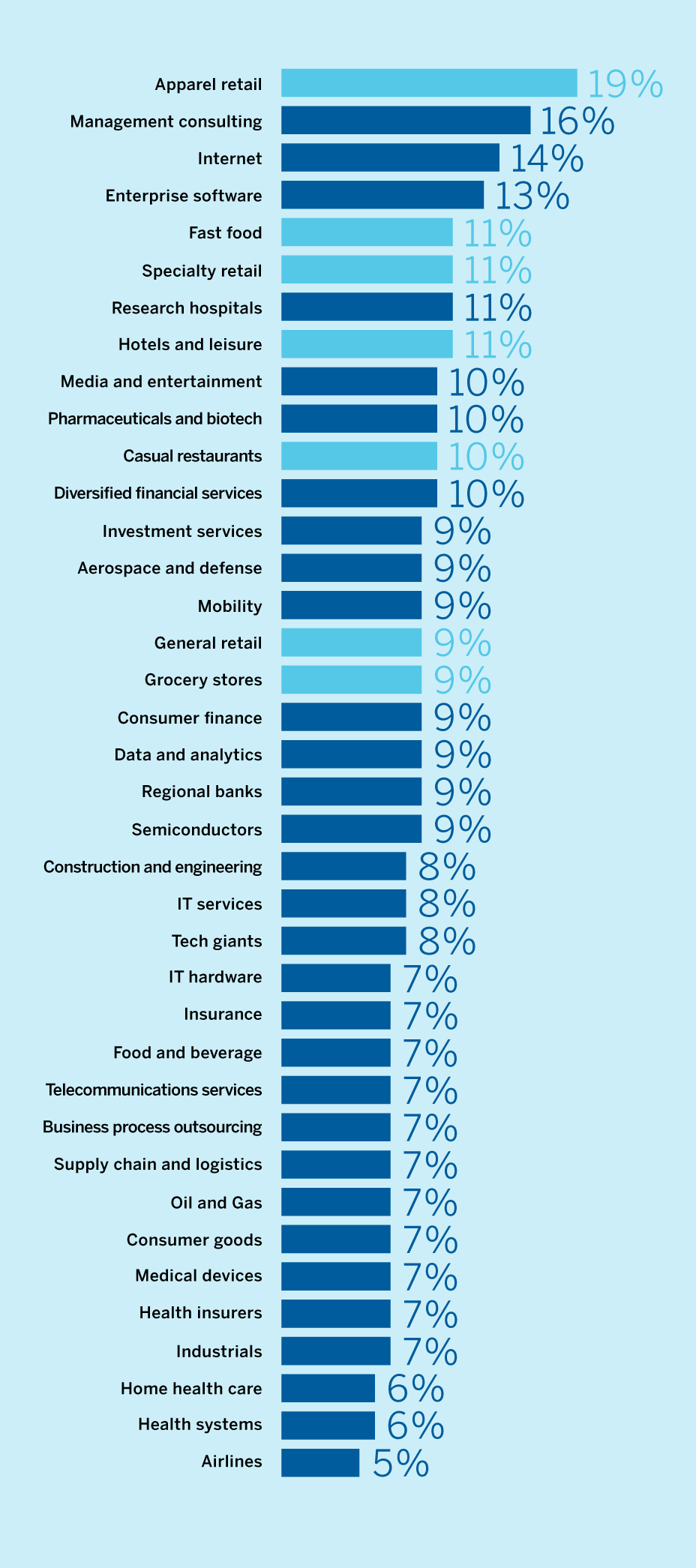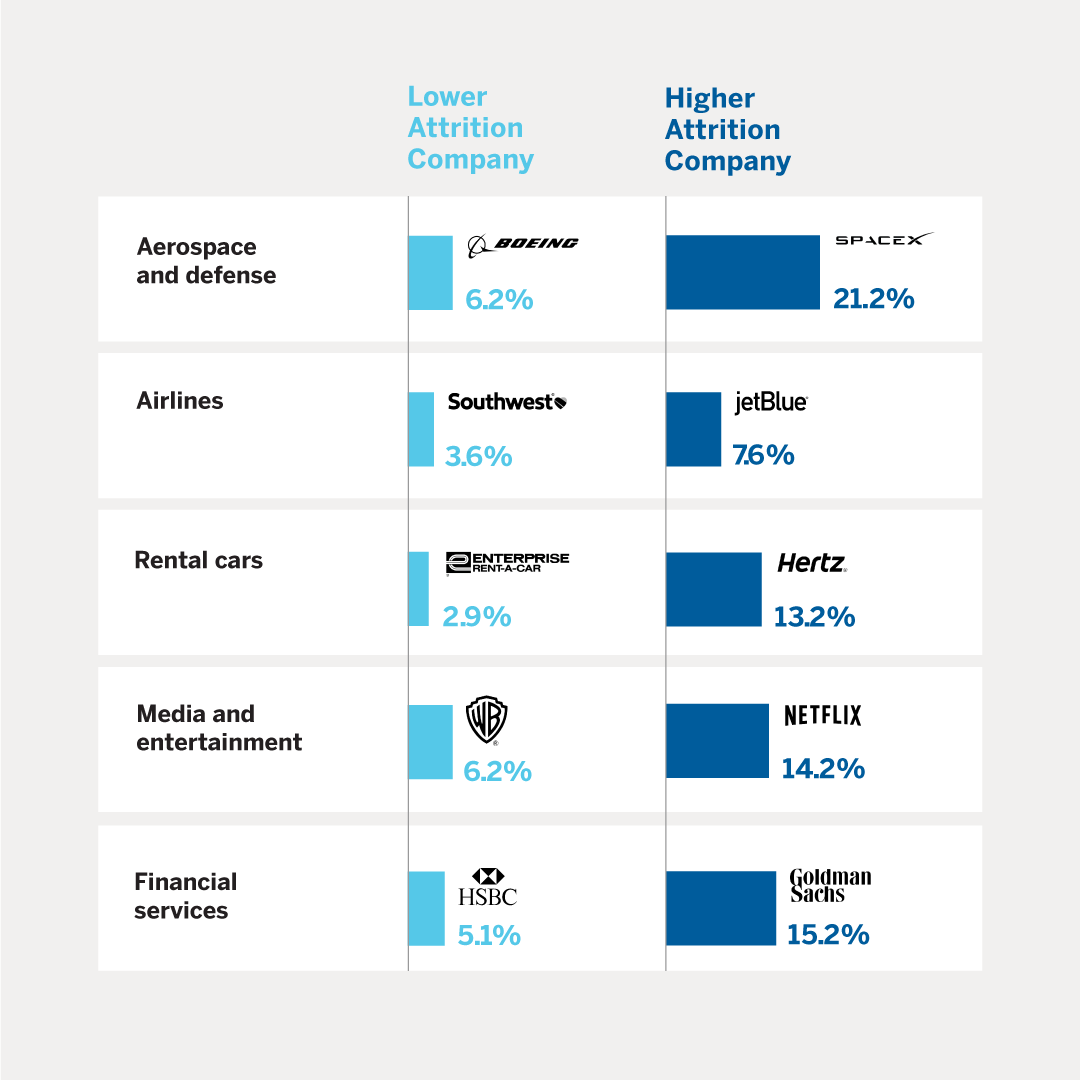Toxic culture in SMBs: 6 ways to address it
The HR community is abuzz with recent research from MIT Sloan Management Review. According to this research, which performed a meta-analysis of research about organizational culture and employee resignations, toxic work culture is the number one reason people give for why they’re quitting their jobs.

But is this research truly as revelatory as some would imply? Not exactly. This research, while profound, simply confirms anecdotal and educated assumptions about the causes of high turnover among businesses.
It does, however, raise questions about toxic culture among small- and medium-sized businesses, who aren’t covered in this research.
Table of Contents
Key Takeaways from MIT/Sloan Research
- Resignation rates vary greatly, even within the same industry
- High turnover isn’t confined to blue-collar workers
- Company culture a bigger factor in attrition than salary
- Innovative companies have a harder time keeping their employees
What Makes a Toxic Work Culture?
- CEOs and the cult of personality
- We’re a family… an unhealthy family
- The microscope effect
- Small business, little support
- Along for the ride
Fighting toxic culture within SMBs
- Leaders set the tone – for better or for worse
- Accountability is key
- Employee training
- An HR guru to diagnose and heal
- Clear communication
- Small but mighty
But before we get into that, let’s go over the highlights of MIT/Sloan’s findings.
Key Takeaways from MIT/Sloan Research
1. Resignation rates vary greatly, even within the same industry
For all the talk about The Great Resignation, we haven’t much discussed the role that company culture plays in employee retention. Some industries simply have greater rates of toxic work culture, and allow for less work/life balance among their employees.
But that’s not all. As the MIT/Sloan report tells us, resignation rates can vary by as much as ten percentage points even within the same industry. This discrepancy may be due to certain companies’ toxic culture falling short compared to the healthy, creative work culture of their competitors.
2. High turnover isn’t confined to blue-collar workers
In the past, when speculating about causes of the Great Resignation, many pointed to a mass exodus of workers from lower-paying jobs as a cause of high resignation numbers. But while many blue-collar workers did resign, whether in search of better pay or a job with less COVID-19 exposure, this research shows that white-collar workers seemingly resigned in equal numbers.
Though several of the industries with the highest rates of employee turnover employ primarily blue-collar workers (apparel retail, fast food, and hospitality), a number of primarily white-collar industries also rank among the highest in employee turnover (management consulting, internet, and enterprise software).
3. Company culture a bigger factor in attrition than salary
“Corporate culture is a much more reliable predictor of industry-adjusted attrition than how employees assess their compensation.”
In a survey of language used by former employees in over one million reviews on the employer survey site Glassdoor, toxic company culture was the number one most powerful factor in each person’s decision to leave their employer. Toxic culture vastly outranked other reasons such as pay, lack of opportunities for recognition, and concerns about COVID-19 risks.
4. Innovative companies have a harder time keeping their employees
This research found that companies well-known for their creative and unique corporate culture actually often had significantly higher rates of turnover than more traditional employers within the same industry.
It appears that while this innovative quality may be appealing to many workers, and may carry some real benefits to business performance, it can have a negative impact on employee retention in general.
Companies with creative or disruptive cultures tend to have higher rates of turnover than their peers in the same industry.
The MIT/Sloan research focused on data from employees and former employees of the Culture500, their name for the group of 500 of the largest, most culturally influential companies in the United States.
But toxic workplace culture is not limited to large corporations, and in many cases, the human resources support and bureaucracy of these large companies serves to address instances of toxicity.
Though it may not manifest in the same way as it does among the large businesses that MIT/Sloan’s study explored, it does exist, and its repercussions impact the lives of the millions of people who work at SMBs around the country. So what does toxic culture look like at SMBs?
What Makes a Toxic Work Culture?
Here are some common elements found in what we’re calling toxic work culture.
- Verbal abuse.
- Harassment and discrimination.
- Lack of accountability.
- Disparity between publicly stated values and reality.
- Lack of work-life balance.
- Extreme stress and uncertainty among employees.
- Silencing of dissenters.
- Lack of professionalism, kindness, and courtesy internally and externally.
- Normalization of immoral, illegal, or unethical conduct.
Toxic Culture at SMBs
CEOs and the cult of personality
Toxic workplace culture is, at its core, the responsibility of a company’s leaders. Though employees of all levels can work together to create and maintain a healthy, collaborative, and supportive work culture, their goals, tone, and workplace norms are inevitably set out by those with the most power – upper level management and CEOs. Toxic individuals in power, whether they be power-hungry CEOs, sexist CIOs, or managers who verbally abuse the people on their team, together doom a workplace’s culture to negativity and meanness.
You’d think that the effects of poor upper management can be observed most acutely among the large businesses that MIT/Sloan’s study followed – and this may be true. But the opposite may actually be the case. Though CEOs and other powerful individuals always set the tone for corporate culture, in a larger company, teams and small groups may be able to carve out healthy group dynamics within this larger toxic environment.
But in a small business, such as a 20-person landscaping company, there can be no such subgroups. In smaller businesses, CEOs and other powerful leaders have an even greater effect upon the culture of a business, because they interact directly with most of their employees day in and day out.
Why do so many CEOs have this negative impact on their business’ workplace culture? It may have something to do with the personality type and hard work necessary in becoming a successful owner of a small- or medium-sized business. There is a certain amount of audacity and, some might say, arrogance, necessary to believe in your own ability to create and run a profitable small business. These traits that make SMBs possible may also contribute to the toxic culture often found in those workplaces.
It may also be related to the power these individuals hold within their business. As the saying goes: power corrupts, and absolute power corrupts absolutely. SMBs often lack the HR infrastructure for reporting incidents of workplace abuse and toxic culture that are standard in larger companies.
We’re a family… an unhealthy family
SMBs often describe their workplace culture as if they are one big family, with everyone cooperating in harmony for the good of the business. While this may be true in the rare odd business, it can also be an indicator of a number of aspects of toxic culture.
For one thing, businesses aren’t like families, no matter how much we might imagine them to be so. Business decisions must prioritize profitability over employees’ preferences. Hard choices must be made, like layoffs, budget cuts, or reorganization. To characterize a small business like a family is to attempt to take advantage of employees’ emotional response to such language, without offering them the unconditional love, support, and comfort that characterize happy families.
It’s tempting to imagine our coworkers as extended family members, and the company we work for as a collaborative, shared cause, but work at its core is transactionary. Also, when we buy into this idea, toxic leaders can use company loyalty and feelings of fondness for coworkers to silence dissent and honest criticism – two factors which are key in the functioning of a healthy family and, for that matter, a healthy workplace.
The microscope effect
The microscope effect is the experience of feeling constantly watched and evaluated at work, and among SMBs, when employees and their managers constantly interact and upper-level management often micromanages, it is all too common.
In a workplace in which there is so much crossover between employees at different levels of the business, employees, especially lower-level employees who hold less power and sway, may feel constantly judged.
There’s nothing wrong with employee assessment. But in SMBs, this feeling of being under a microscope constantly can become deeply unhealthy – especially if the managers observing are prone to micromanagement, abuse, and other toxic workplace behaviors. We see a version of this trend of employee surveillance among large companies, too, who are increasingly engaging software companies to spy on their employees at work and at home.
Innovation and creativity require a safe and predictable environment – one in which employees feel supported in taking risks, exploring, and making mistakes. When employees are constantly observed and the details of their behavior are nitpicked, toxic managers are killing any chance of real progress and innovation.
Small business, little support
SMBs tend to have fewer resources than larger companies. When it comes to Human Resources, there may be just one designated person at the business to deal with those matters, or no one at all. Perhaps that person tasked with HR duties has no real HR training, or perhaps they have other responsibilities that take priority in their day-to-day.
Though an HR department alone can’t fix a toxic work culture, especially one perpetuated by poor leadership, they can push back against these trends. HR represents personal and legal accountability for those who would abuse their power in the workplace, whether to bully their subordinates or to belittle employees with inappropriate or unprofessional remarks.
Without an HR department, those who experience sexism, racism, ableism, or other forms of harassment and discrimination in the workplace may feel they have no recourse. This not only impacts employee morale and well-being – it also opens employers up to serious legal liability.
Along for the ride
Most employees share the experience of feeling powerless at some point in their career, no matter their role in the business or the amount of power they have. But among SMBs, where toxic culture can often be deeply ingrained and perpetuated by top leadership as opposed to departmental or team-specific toxicity, the feeling of powerlessness can be far more common. This feeling reduces employee engagement, and it’s often a deciding factor for employees thinking of quitting and finding a new job.
Fighting Toxic Culture Within SMBs
Now that we’ve discussed how toxic culture manifests itself within SMBs, how can we work to remedy this epidemic of unhappiness and workplace abuse? It may be that many of the qualities that make SMBs thrive can also contribute to problems of toxic culture. We can’t simply accept that, however. Growth and accountability can happen in tandem without compromising company performance.
Here are a few ideas for how SMBs can fight toxic culture internally, as well as within their industry.
- Leaders set the tone – for better or for worse
- Accountability is key
- Employee training
- An HR guru to diagnose and heal
- Clear communication
- Small but mighty
1. Leaders set the tone – for better or for worse
Simply put, fixing toxic work culture is always the responsibility of company leaders. Whether a given leader created the toxic culture or not is irrelevant. Employees take their cues from, and operate within, the standards set by their managers. Poor management will lead to poor workplace culture without fail.
It’s important that we communicate this because employees often face blame for toxic work culture – as if it’s their fault that their leaders set a poor example, expect the impossible, and permit toxic behavior in the workplace. Certainly everyone is responsible for their own actions, but it’s SMB leaders who have the true power to reframe work culture, set new healthier boundaries, and recenter the employee experience.
It’s SMB leaders who have the true power to reframe work culture, set new healthier boundaries, and recenter the employee experience.
For this reason, when it comes to fixing toxic work culture, leaders must understand the power they hold within their organization and learn to wield that power judiciously. This is no easy feat – which is part of the reason toxic culture often continues unchecked in SMBs, where leaders can intentionally cultivate an environment that punishes naysayers and roots out accountability measures.
2. Accountability is key
Accountability, or the requirement to answer and be held responsible for one’s own actions, is one of the functions of a healthy work culture. Toxic culture punishes those who take responsibility for small, harmless mistakes and promotes blame and overcompensation. A truly healthy work culture rewards honesty, holds employees responsible for their mistakes, and allows individuals room to grow.
Crucially, this accountability must be present at every level of the business. Employees must buy into a system of accountability in order for it to be truly effective, and if they have the sense that their managers are not also held to rigorous standards, they’ll lose faith in the process.
3. Employee training
Employers set the tone of the workplace, but employees reinforce that tone with every tiny interaction. Leaders can remedy a toxic work culture not only by holding themselves to a higher standard, but also by encouraging education and personal improvement.
Employee training for employees of all levels encourages a healthy, inclusive environment. It also sets clear expectations for employee behavior. If you don’t already have a zero-tolerance policy for sexual harassment, racism, and verbal abuse, don’t wait any longer to create one.
4. An HR guru to diagnose and heal
Human Resources can’t fix everything. But the presence of an HR person within an organization, regardless of its size, represents an employer’s commitment to treating its employees with fairness, respect, and equality.
Even if all you can afford is one HR person, or a part-time HR representative on call for when problems arise, something is better than nothing. Human Resources professionals are trained to recognize and address toxic work culture, and they offer unique insights into problems that may not always be obvious to an organization’s leaders.
5. Clear communication
Does your organization have an internal communications strategy? Do you have a plan for how to fulfill the commitments you make to your employees about committing to anti-racist causes and taking meaningful action? Without clear, straightforward communication and a pattern of concrete action, you can’t expect true change within your organization.
Use your communication tools to make sure everyone is on the same page about conduct and behavior standards. If you want to create an environment with more accountability, clear communication is central, so your employees understand the standards they’re to be held to.
6. Small but mighty
For all that SMBs are vulnerable to unique symptoms of toxic work culture, they aren’t alone in the experience. Large companies also have toxic work cultures. In the same way that SMBs have a different experience of toxic culture, they also have different opportunities for addressing that culture. Many of the factors that can contribute to toxic culture in small businesses can also be strengths in the right circumstances.
Small- and medium-sized businesses face unique challenges when it comes to addressing toxic work culture, which research shows is widespread among workplaces today. But there are concrete steps leaders can take to tear down toxic work norms and rebuild a work culture based on mutual respect, decency, and good ethics.






